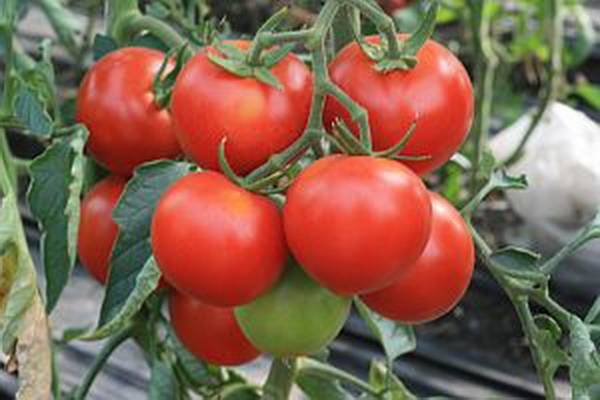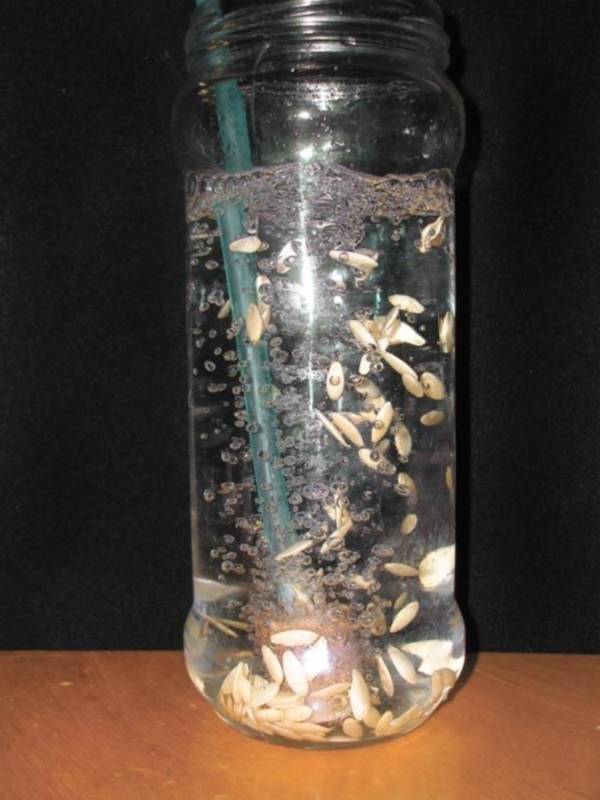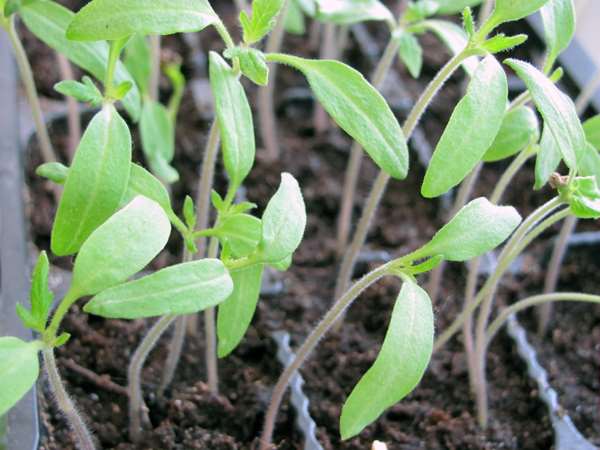Features of growing tomatoes
 Tomato is the most common vegetable crop among summer residents due to the wide variety of varieties and the enormous benefits of fruits in human nutrition. Tomatoes have become a favorite ingredient in many dishes of housewives due to their ease of use and the possibility of using them both raw and canned. Growing tomatoes has its own characteristics in order to get a high quality crop. We will consider them in detail and indicate the important points at each stage. Read about caring for tomatoes in the greenhouse!
Tomato is the most common vegetable crop among summer residents due to the wide variety of varieties and the enormous benefits of fruits in human nutrition. Tomatoes have become a favorite ingredient in many dishes of housewives due to their ease of use and the possibility of using them both raw and canned. Growing tomatoes has its own characteristics in order to get a high quality crop. We will consider them in detail and indicate the important points at each stage. Read about caring for tomatoes in the greenhouse!
Seeds
Before describing how to properly grow tomatoes, it is necessary to dwell on one of the main points related to seed material. Seed selection is one of the most important points in obtaining tomatoes. More than half of the success depends on this. growing... The seeds contain the full potential of the yield, which can be realized in specific conditions.
When choosing tomato seeds, consider the following points:
- the reputation of the manufacturer (a company that has established itself well for several years will only pack high-quality seeds, they can be expensive, but this will give a high probability of obtaining the plants and fruits described on the package);
- suitability for a given growing region (each of the 12 light zones has its own varieties and hybrids, so it is necessary to purchase seeds for the indicated area, but there are those intended for garden plots that can be grown everywhere);
- the need to create greenhouse conditions or suitable for open ground (when choosing seeds, you need to know the purpose of growing them in protected ground or without it, since you can get the declared yield only under those conditions that are indicated in the description);
- variety or hybrid (as a rule, hybrid plants have a greater potential for yield compared to varieties, but in unfavorable conditions varieties can perform better, moreover, seeds can be collected from the best varietal plants for further reproduction);
- potential yield (it is necessary to select seeds with high potential, which can be realized during the season);
- immunity to certain diseases and pests (this property makes it possible to reduce the number of treatments of plants with harmful pesticides and get better-quality fruits);
- the type of bush and its height (knowing the parameters of the plant, you can choose the optimal planting scheme and prepare in advance a support for the stem, if necessary);
- early ripening (often, getting earlier fruits, the overall yield decreases, so it is advisable to have tomato seeds of different ripening periods so that there is a uniform flow of products during the season);
- the purpose of the harvest (it is necessary to immediately determine for what purposes the fruits will be used, therefore it is recommended to have tomato seeds for fresh consumption, for pickling, juice and paste);
- the shape and color of the fruits (tomatoes can be grown not only with the usual red color, but also with yellow, orange, pink, black, and the shape can be varied from flat-rounded to plum);
- the taste of the pulp (the higher the sugar content, the more pleasant the fruit tastes, so it is advisable to pay attention to this indicator);
- fruit resistance to mechanical stress (if it is necessary to transport fruits over long distances, then they must have a dense skin and fleshy pulp, tomatoes with lower requirements for this parameter are suitable for local consumption).
Seed preparation
The solution to the question of how to grow a good tomato crop begins with the preparation of the seeds. Having chosen varieties for your site, you need to complete the preparatory work. If the seeds have already been treated by the manufacturer and have a signal color, then no additional measures are taken.
On seeds that have a natural light brown color and have a slight pubescence, the following operations are done shortly before sowing, which improve the quality of seedlings:
- sorting (in a 5% aqueous solution of table salt, only full-fledged seeds are lowered to the bottom, which, after washing in running water, are used for the next stage);
- disinfection (within 20 minutes they are placed in a 1% solution of potassium permanganate, which removes a superficial infection that causes seedling diseases);
- bubbling (enrichment with oxygen in the air through bubbles in the water gives additional germination energy);

- germination (after soaking in water for 3-5 days, the first sprouts appear and the seeds must be hardened for better resistance to adverse conditions);
- hardening (for 5 days, germinated seeds are placed in a refrigerator at a temperature of +5 degrees, which improves the adaptive properties of future seedlings).
Sowing and growing tomato seedlings
 Getting high quality seedlings is one of the important stages of growing tomatoes. After complete preparation of the seeds, they are sown in prepared cups with nutrient soil. You can sow two or three seeds in one glass, then leaving only one seedling after germination. There is an option first sowing in cassettes with cells of 1.5x1.5 centimeters, and then transplanting seedlings when the phase of 2-3 true leaves is reached into cups with a diameter of 5 centimeters. Both methods are acceptable, but the second is more convenient, as it saves space for seedlings in the first month of growing.
Getting high quality seedlings is one of the important stages of growing tomatoes. After complete preparation of the seeds, they are sown in prepared cups with nutrient soil. You can sow two or three seeds in one glass, then leaving only one seedling after germination. There is an option first sowing in cassettes with cells of 1.5x1.5 centimeters, and then transplanting seedlings when the phase of 2-3 true leaves is reached into cups with a diameter of 5 centimeters. Both methods are acceptable, but the second is more convenient, as it saves space for seedlings in the first month of growing.

To obtain high-quality seedlings, the following temperature conditions must be observed:
- from sowing to emergence + 24 ... + 28 degrees;
- to phase 1-2 of this leaf + 15 ... + 18 degrees;
- up to phase 3-4 of this leaf + 20 ... + 22 degrees;
- until the phase of the appearance of the first peduncle + 22 ... + 24 degrees.

To obtain "stocky" seedlings, three sprays are carried out with Athlete's solution in the phase of two, four and seven true leaves. This will prevent the seedlings from stretching.
Technology for growing tomatoes in a greenhouse

After planting seedlings in a place of permanent growth, growing tomatoes in a greenhouse includes the following work:
- watering (carried out when the moisture content in the soil is less than 75% of the total field moisture capacity, it is determined by compressing the soil into a fist, if the lump crumbles, then irrigation is necessary);
- loosening the soil (after the appearance of a crust on the soil surface, it must be destroyed by loosening, which will provide additional air supply to the roots and reduce evaporation);
- fertilizer (top dressing is carried out weekly with fertilizer, in which nitrogen, phosphorus, potassium are in proportions 1: 3: 2 at a rate of 10 grams per ten-liter bucket for 5 plants);
- treatment against pests and diseases (prophylactically against infections sprayed from planting seedlings monthly with 1% Bordeaux liquid with the addition of 10 ml of Fufanon per bucket with a capacity of 10 liters, stopping a month before harvesting);
- garter (as the plants grow, they are attached to the support, tied with fabric ribbons or twine);
- additional pollination (during abundant flowering, in order to get more ovaries, it is necessary to tap on the plants during the daytime so that the pollen spills out and falls on the stigmas of the pistils);

- removal of stepsons (plants are formed according to the type of bush);
- trimming the bottom leaves (the lower part of the trunk is exposed from the moment the first brush is fully filled in order to improve ventilation of the plants and stimulate ripening).
 Compliance with the above conditions eliminates additional questions of how to grow tomatoes in a greenhouse.
Compliance with the above conditions eliminates additional questions of how to grow tomatoes in a greenhouse.
After the start of fruit ripening, the first sampling is carried out in order to stimulate further ripe fruits.
Growing tomatoes in the open field after transplanting seedlings is similar to greenhouse technology.
The article describes in detail the agricultural technology of tomatoes from the selection of seeds to harvest. It is impossible to note the subtleties of growing in one article. Therefore, I consider it important to clarify some points. For growing seedlings at home. A special root former Atlet is used when the seedlings have at least 4 leaves. And seedlings begin to stretch in the stage of cotyledons. Firstly, as soon as the first shoots appear, the air temperature must be reduced so that the shoots are delayed in development and the stalk acquires a purple hue. This is only good for the plant in the first week. Secondly, the plants stretch at night, so the night temperature should always be lower than during the day. Third, two weeks before planting, the plants need to be hardened gradually under direct sunlight and a low night temperature. Create conditions close to natural. This will help the plants set up flower brushes earlier and keep the seedlings compact. On the first brush, fruits will be bound. Treatment against fungal diseases is best done with a systemic drug, phytosporin. Bitoxibacillin is suitable for spraying in a greenhouse. These are biological preparations, there will be no effective and harmful accumulations in the fruits.